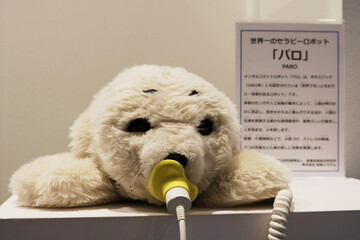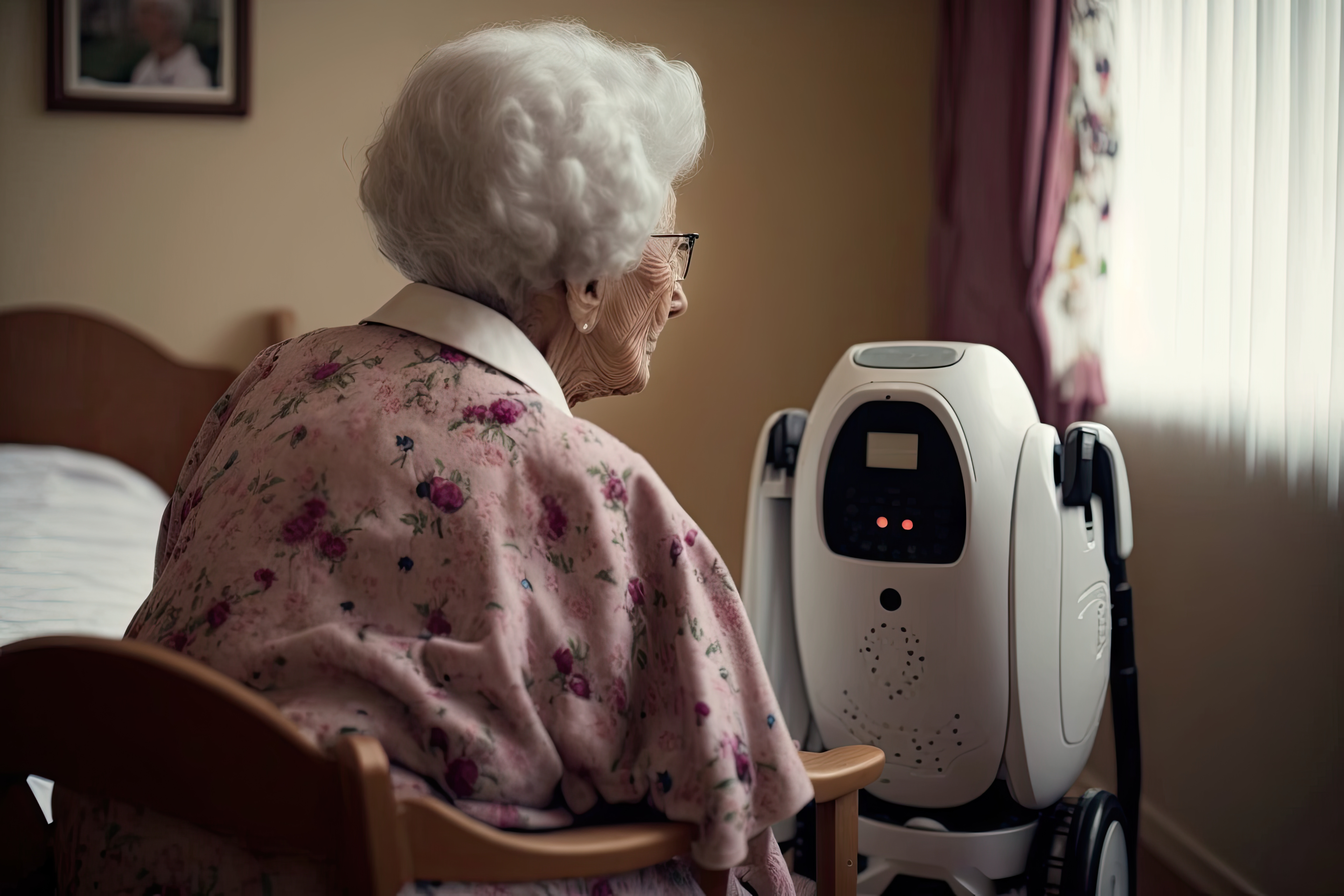15 years ago, Paro the therapeutic robotic seal came on the market, and it began to seem possible that elder care and perhaps even childcare could be automated. Since then, there have been multiple new ideas as well as many expressions of concern about the practical and ethical consequences of giving these tasks over to robots. Now, a new report from the European Federation of Public Service Unions (EPSU) updates our understanding of how things are working out.
Caring
Paro in particular was examined in the report. Paro, a stuffed toy seal which moves and sounds like a real baby seal, according to the maker’s website, and learns to respond to specifically to the actions of the user. Early clinical trials found that Paro reduced stress for elderly patients and for their caregivers. In controlled placebo trials, however, researchers found that Paro worked just as well as an ordinary stuffed toy. Its robotic skills, sensors, and sounds made no difference in its effectiveness.

“There are good reasons to be sceptical about the latest wave of robotic innovation,” says EPSU. “Social care has purportedly been on the threshold of an automation revolution for decades. Such techno-optimism is in reality a symptom of the care crisis, stemming from the undervaluation of care work. Poor working conditions, an ageing population and hence the perennially growing gap between demand for care and the supply of skilled labour will not be magicked away by replacing labour with machines.”
What’s more, the study found that care robots typically did not save time or labor. Instead, they diverted staff from interactions with humans to interactions with the robots. This was satisfying to neither the elderly patients nor the staff.
The report didn’t bring up the ethical concerns often cited in considering care robots. Is it deceptive to present a care robot to an individual with dementia who might not realize that it is a machine? Is it right to limit interaction with humans for patients by replacing those contacts with machines?
Physical assistance
Robots that provide physical assistance seem more practical; they do not have the ethical issues found in care robots and they might be more valuable. Unfortunately, they generally are not. Robots designed to lift elderly people, for example, often could not do so without hurting patients.
Caregivers suggested that this type of robot would be more useful in cleaning or laundry applications that in actual care for human beings.
If or when?
Supporters of robot elder care continue to come up with new technologies. Some, like sensors that recognize when an elderly person has fallen or has not moved in a long time, have clear benefits. Those that claim to provide actual care for the patients have disappointed potential users. As popular as the idea has been in Japan, the nation with the most elderly population in the world, these kinds of robots are used in only a fraction of care homes in Japan. In spite of subsidies for elder care robots, only 26% of care homes used them. In many cases, they’ve been tried and retired.
The New York Times had a very optimistic article about robots in nursing homes, focusing on the possible solution to the labor shortage. But only 10% of U.S. nursing homes use robots, according to a 2019 study.
As with so much else in the field of robotics, the vision is far ahead of the reality. Will the reality catch up tot he dream? And if so, will that be a good thing for elderly people? Time will tell.



